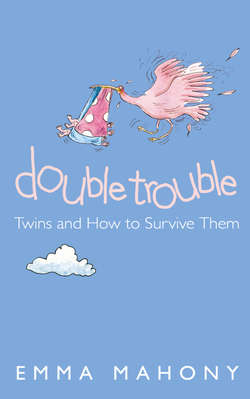Читать книгу Double Trouble: Twins and How to Survive Them - Emma Mahony - Страница 12
Identical twins
ОглавлениеIdentical twins are sometimes described as ‘a freak of nature’, because there is no genetic reason for producing them. Unlike fraternal twins, that follow the mother’s hereditary line, identical twins are theoretically a one-off occurring in one in every three twin births.
Not all 20-week scans, when you can tell the sex of the babies, can diagnose for sure whether the twins are identical or not. Sometimes with identical twins the egg splits later in the pregnancy, between day 7 and 14, resulting in separate placentas and separate sacs. To confuse matters further, non-identical twins can sometimes be misdiagnosed by ultrasound scans when their two placentas have fused into one.
There are now two types of test done at birth to confirm for sure whether the twins are identical or not – a blood test to compare blood factors, and the more recent DNA fingerprinting. Parents of identical twins usually want to know the results, not only to establish their birthright, but also for medical reasons. If one child shows susceptibility to allergy, asthma or any childhood illnesses, they will be better informed to protect the other.
One good thing about identical twins is that when people ask you: ‘Are they identical?’ You can answer ‘Yes!’ (and so can your twins). However, be prepared for fresh idiocy. Caroline Watton, who has identical twin girls, was stopped by an old lady in the supermarket as she was pushing the girls around in a trolley. ‘Ooh, aren’t they sweet!’ cooed the old woman. ‘Are they identical?’ Before Caroline could answer ‘Yes’, the woman contradicted her. ‘Of course they’re not!’ she said. ‘Look, one’s fast asleep and the other’s awake.’ The nation’s biology teachers have a lot to answer for.
